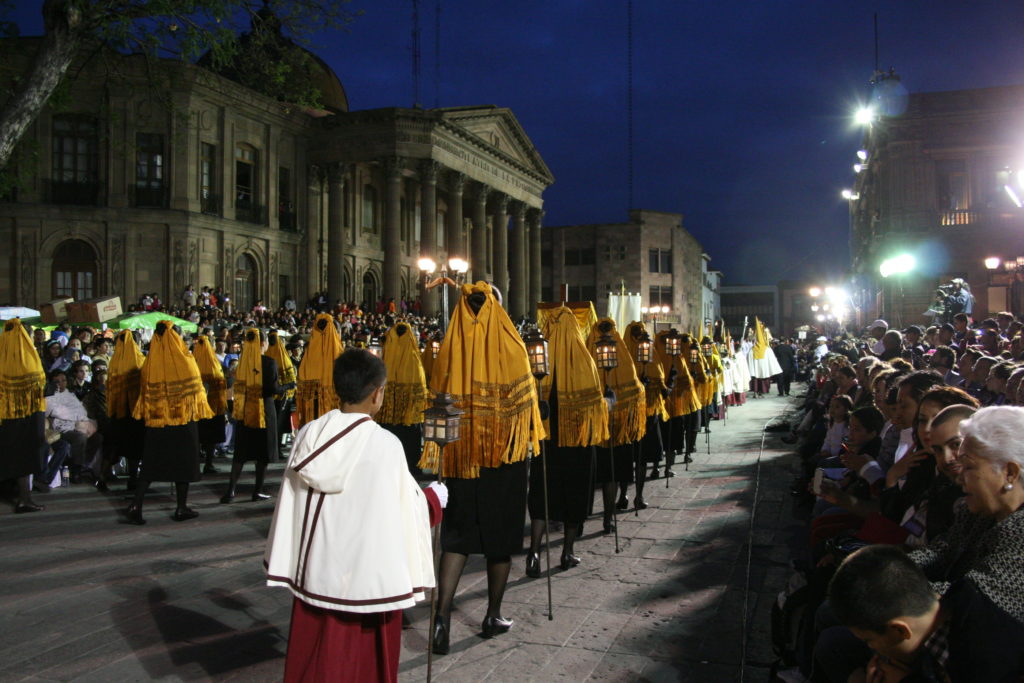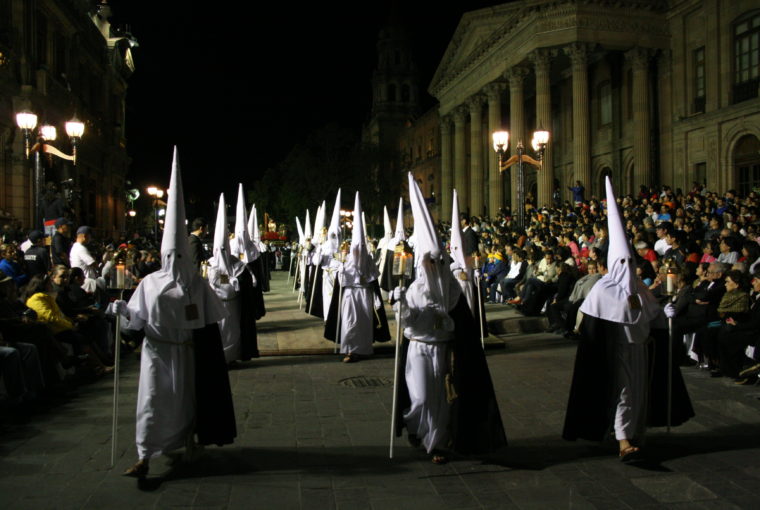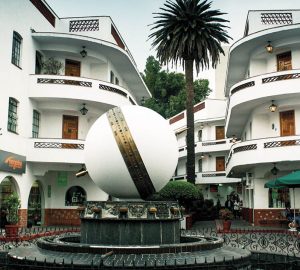In every corner of Mexico, Easter is a nationwide spectacle of pageantry, reverence and celebration, lasting throughout Holy Week. Planning for Holy Week starts with months of anticipation and festivities including Passion plays, fervent processions and altar displays taking place all over the country. In San Luis Potosí, having our baroque and neoclassical Centro Histórico as a backdrop, Holy Week becomes an internationally recognized season and one of the favorite times of the year for tourists to come visit.
In San Luis Potosí Holy Week becomes an
internationally recognized season and one of the
favorite times of the year for tourists to come visit.
As with almost of all Mexican celebrations, Semana Santa is a mixture of our Spanish heritage – still running strong – and our prehispanic past; Semana Santa is thus a reverent observance of the las days of Jesus and Pascua is a celebration of the Resurrection. Both celebrations, along with Christmas, are some of the most important religious holidays on Mexico since the conversion of the indigenous peoples to Catholicism in the 16th century.

Semana Santa celebrations involve solemn processions, reenactments of biblical scenes and even prehispanic dances and Papier-mâché figures of Judas Iscariot filled with fireworks. Since schools are out for Semana Santa and Thursday and Friday are days off for many businesses, many travel to popular destinations to enjoy the outdoors, spend some family time and take part in the Semana Santa festivities.
In San Luis Potosí the heap of Semana Santa festivities is, without a doubt, the Procesión del Silencio, Spanish for Procession of Silence. Officially established in 1954 by bullfighters and Carmelite priests, the Procession began as a small event to enact the Via Crucis and pay homage to Our Lady of Solitude at the Church of El Carmen.
In San Luis Potosí the heap of Semana Santa festivities
is, without a doubt, the Procesión del Silencio.
The Procession takes place on Good Friday, in the Centro Histórico of San Luis Potosí, filled with churches and colonial era buildings. Adding to the ambiance, most of the buildings turn their lights, with streetlights dimming as well to allow the candles held by the Procession participants to shine brighter, giving the while downtown a church-like atmosphere. Reverence and solemnity is present too: even though thousands of spectators line the streets, no one will speak during the hours of the Procession, giving it its name.
Preparations for the Procesión del Silencio start months in advance as more than two thousand people from over twenty-eight Cofradías – which are Catholic religious brotherhoods – take part in the event. Participants meet in the Plaza del Carmen marking the Church of El Carmen as a starting and finish point of the Procession. Each of the Cofradías carries a representative figure or sculpture from the Via Crucis and each has its own colorful and dramatic livery, many of which are characterized by a pointed hat with a drape that covers the face and neck, called a capirote.
Just after dusk a trumpet call can be hard piercing the silence outside the Church of El Carmen and so the Procession, meant to mourn the Passion and Death of Christ begins. Drumbeats mark the pace as the marching faithful carry candles, and floats depicting the Via Crucis are carried by members of the Cofradías on their shoulders. Many of these floats weigh well over a ton, so as many as 40 carriers, or costaleros, are needed to carry them through the narrow streets of the Centro Histórico.

The march lasts a couple of hours and wends around the Centro Historico. At times during the procession the “Saeta,” a short, plaintive verse that breaks the rigidity of drums is heard. The last Cofradía making the route is “La Virgen de la Soledad,” and its return to the Temple of Carmen marks the end of the commemoration.
The procession is the highlight of two weeks of activities related to Holy Week, which include those of religious, cultural and sporting nature, beginning on the Viernes de Dolores, the Friday before Palm Sunday. On this day, crowds gather on a small alley called Callejón del Buche to create altars dedicated to the Virgin Mary as Our Lady of Sorrows. During the rest of the week more altars are assembled depicting the various Stations of the Cross, with some of these destined to be carried during the Good Friday procession.
Palm Sunday is marked with a simple procession to the Cathedral for the blessing of palms. On Maundy Thursday, there is another procession with seven platforms that visit the various main neighborhoods of the city and their main churches. In the churches, the images of saints are covered on purple cloths as a sign of mourning, bread is distributed to remember the Last Supper and sprigs of chamomile are blessed. During the day on Good Friday, the main event is a reenactment of the crucifixion in the San Juan de Guadalupe neighborhood, and on Holy Saturday, the Burning of Judas occurs on the Plaza de los Fundadores.
The Holy Week season in San Luis Potosí stretches for two weeks and many events take place in and around town. These include art exhibitions, concerts, conferences, guided tours and volleyball and basketball tournaments. They also include a half marathon between Venado and Charcas and an international youth tennis tournament.
Article written with information by:
Secretaría de Cultura del Estado de San Luis Potosí,
Tradiciones Potosinas,
and local newspapers






